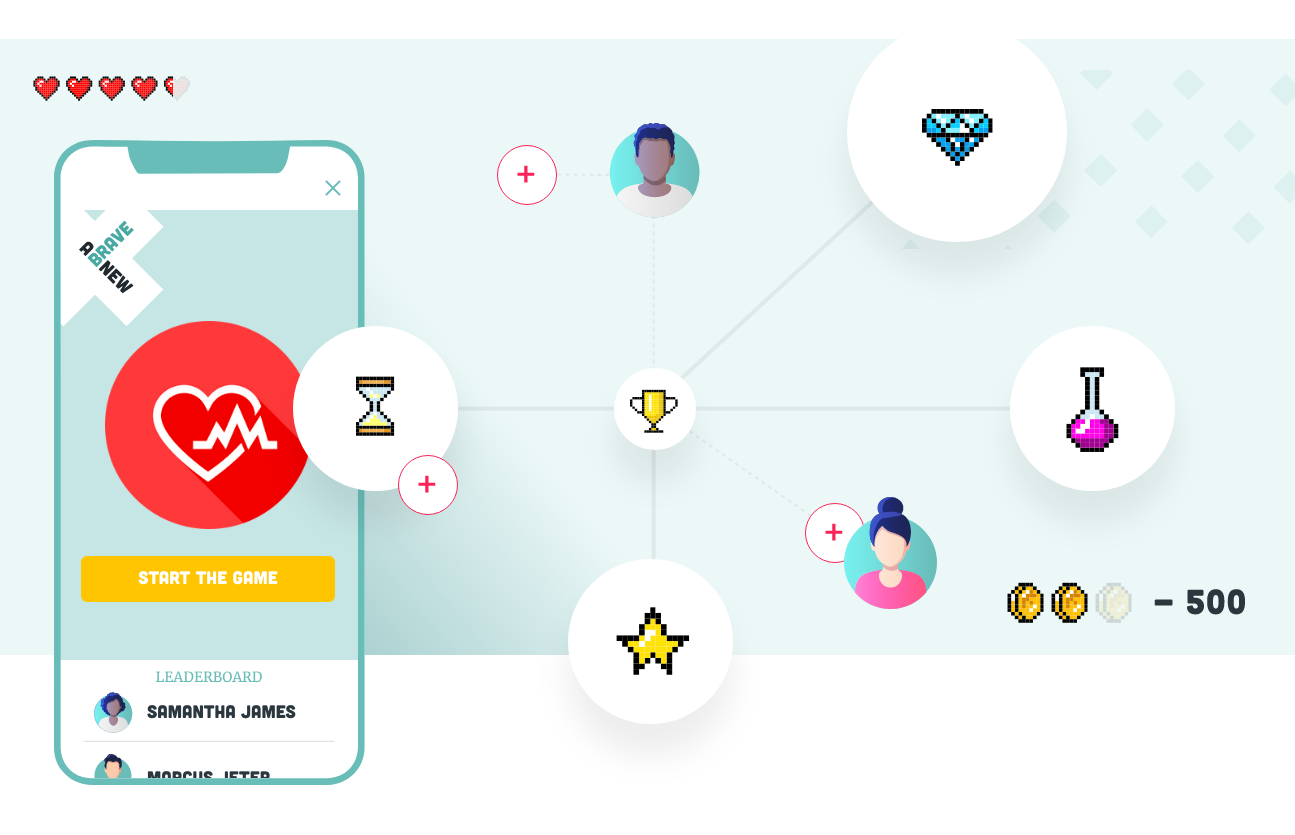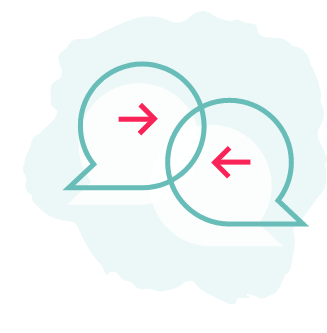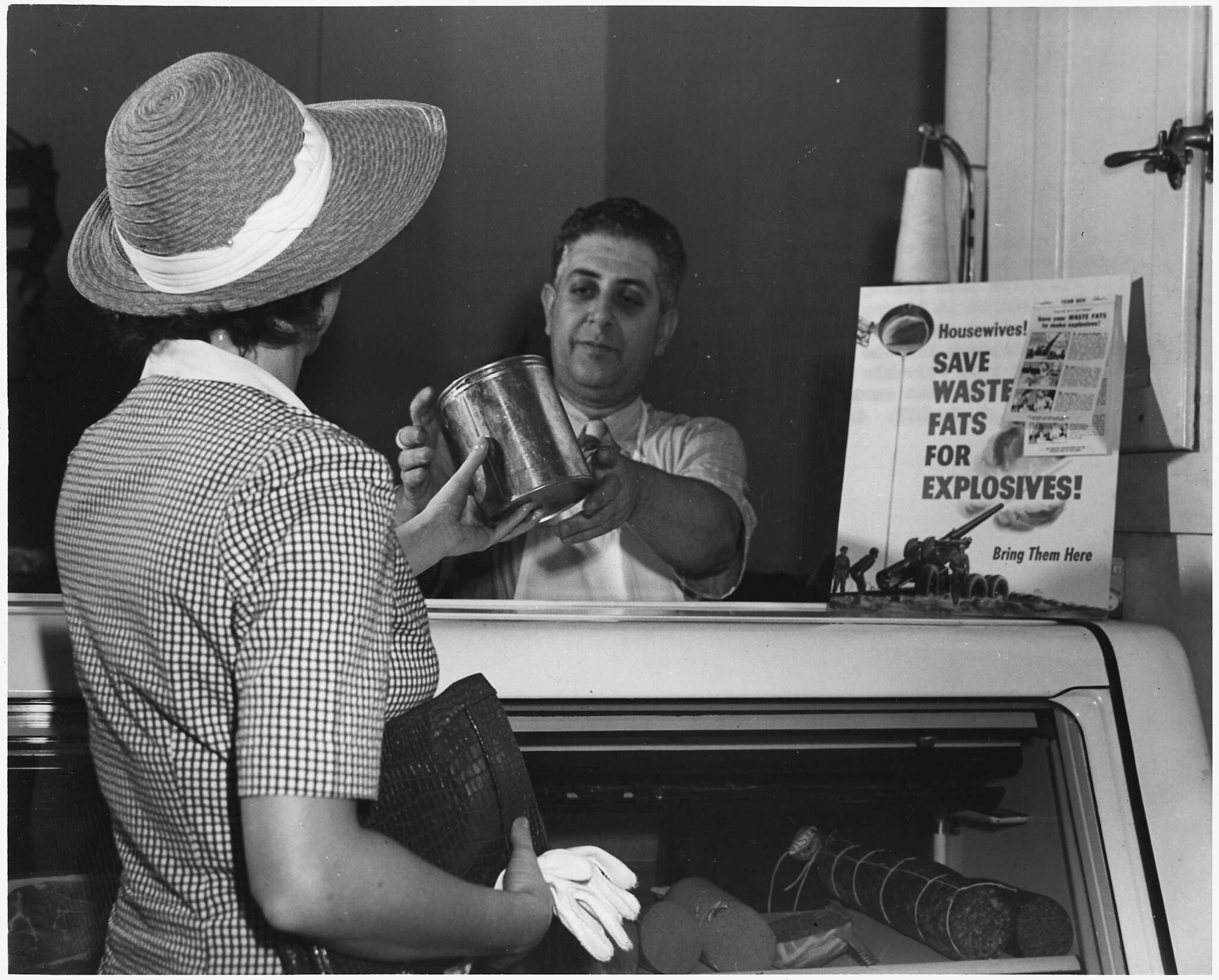Over the past few months, I’ve had the great privilege to interview some great minds working in healthcare—from community organizers, to marketers, to product developers. I’ve been struck by their wisdom and passion in how they’re approaching their work amongst so much change.
The healthcare industry is undergoing a massive shift, and leaders are tasked with navigating their organizations through the uncertainty. Here are five of my takeaways about what these healthcare leaders have learned this year and how they’re applying that knowledge as they approach 2022.
If you want to listen to our full conversations on our podcast, I’ve also linked them below.
1. Using digital tools and gamification to improve patient accessibility and outcomes, from Jenn Roberts of Hello Heart (read or listen to the full podcast episode here)
The proliferation of digital healthcare tools has brought a ton of opportunity (and a little clutter) to the marketplace. The data shows that adoption of virtual and digital healthcare tools has exploded over the past two years.
There are many challenges to be sure. (Is there a market for your innovation? How do you get it to the right people? Who will pay for it?) But, let’s set that aside for a minute.
We know that preventive measures work, and our sick care system is slowly shifting to value-based models. One thing that Hello Heart is learning is that digital tools are improving patient health based on two major factors:
- Gamification is improving consistent use of digital tools. These can be as simple as push notifications, letting you know it’s time to check your blood pressure. Or, it can be a simple reward screen that says “yay you!” to help you feel good for taking a few minutes out of your day to do something proactive for your health.
- On-demand service is improving accessibility. According to Jenn Roberts, “People aren’t necessarily going to say, ‘Ok, at 4 o'clock I'm going to stop working so I can talk to my health coach about exercising.’ Or, ‘I have time to make an appointment at this certain time.’ You really have to be able to offer on-demand services, and it may be at 10:30 at night when they're accessing this information or clinical services. Flexibility and scheduling have been some of the biggest changes, which is so exciting.”
Despite new digital technologies solving gaps in care, or providing a really great service that’s needed, we all know that most of the battle is in getting people to use them regularly. Making it fun, mirroring other social media tools, and improving accessibility are great ways to tackle those challenges.

2. Converting unstructured healthcare data into useable information, with Hannah Thomas (read or listen to the full podcast episode here)
Visualization of data can be a powerful tool to help healthcare professionals make sense of volumes of information and offer better insights and care to their patients. The improvement in the quality of healthcare is dependent on the ability to communicate and share information, which needs to be available to those who need it at the right time and location.
“There is a tremendous amount of thought around how to use data and then how to convert it into information. One of the challenges with healthcare is that it is predominantly unstructured data.” — Hannah ThomasThe tools that are available for us to use are only as good as the data that’s put into them. So data collection, completeness of data, and also standardizing practices across systems so that data can be used effectively are of vital importance in the coming year.
Turning data into information is not only important for an individual provider and their patient but also for population health, seeing gaps in care, even for systems deciding where new services are needed in the form of a new hospital or care center.
Ultimately, we want patients to feel empowered and feel like they have control of their health. We want to give them the information that helps them to make the right decisions for themselves. We need to make sure that we are using all of the tools available for us to do that and do it in a way that’s accessible for them when they need it, where they need it.
Using data this way will continue to be a huge challenge for healthcare systems in the coming years. 3. Listening to the community to serve it better, with Garrett Harding (read or listen to the full podcast episode here)
3. Listening to the community to serve it better, with Garrett Harding (read or listen to the full podcast episode here)
Educating patients has long felt like a lot of telling. You should do this, you should do that. Don’t smoke, wear sunscreen. Walk more, eat less.
This has slowly been changing, but we've all experienced healthcare messaging. Do all these things or you're going to die. But you can't really act if you're scared, you need to do one small thing at a time and experience success. And, you can't just rearrange your whole life all at once, it just isn't feasible.
Listening to patients and reflecting their input is far more effective than telling them what to do. When we listen and empathize, we are helping patients help themselves, so they can take ownership of their own health. That’s a paradigm shift that’s been really hard for the healthcare system to get used to, because it takes more time, empathy, and care.One way healthcare systems are listening to patients is through advisory or community boards. Garrett Harding shares about the Huntsman Cancer Institute’s experience:
“When the Community Advisory Board was established, one of the key goals was that we wanted the community to help guide a lot of the high level work of where we may want to put resources or what projects we need to engage in. It's been really exciting, because we're learning many things that we have not known in the past.
“We assume that someone's life experience is the same as ours, or that these diverse communities are all the same, right? Or we make these assumptions about even their behaviors, or what or they may think, and what we've learned is of course, that is not the case. And every specific community, every individual has very specific needs. And I think one of the things that we really strive for, which we can always work on, is ensuring that those needs are met. Because, if we ask the community what they think and then we don't fulfill that, that's almost worse than not even asking them, right? So there is a sense of responsibility that we have—that we take this very seriously—that if we do engage outside groups and community partners, we want to be able to fulfill that.”
If you don’t already, establishing a patient advisory or community board in 2022 would bring helpful and effective voices into your organization that will help you meet needs more effectively. 4. Using grassroots efforts to get the right attention, with Erica Klinger (read or listen to the full podcast episode here)
4. Using grassroots efforts to get the right attention, with Erica Klinger (read or listen to the full podcast episode here)
Whether it’s the attention of lawmakers, hospital administrators, busy physicians, or more, influence is so important. But without the big budgets, lobbyists, or staff, it can be hard to get in front of the people you need to help you take the next step.
Erica Klinger of the Association for Accessible Medicines understands these challenges and knows that one of the first things you should do is build your grassroots advocacy.
“When you say the words grassroots advocacy, grassroots is leveraging and empowering a person, or a patient, to go out and actually send a message, or call, email, tweet at—what have you these days—send a video to your lawmaker. And you're giving them the tools to do that.
“And it's more effective, because lawmakers are patients, and they're going to listen to someone that's in their state. So if you're a lawmaker in the State of California, you might listen and care about what your constituent's talking about. Versus an association trying to break through and tap in and schedule a meeting with a lawmaker. Because the association is credible, but when it comes from a patient, way better.”
Big budgets are certainly nice. But tapping into the very real lives of patients is an incredibly effective way to gain trust, get attention, and build brand loyalty with patients that have been positively impacted by your work.
 5. Focusing on the people you’re helping to get you through the tough times, with Scott Brown of ADVault (read or listen to the full podcast episode here)
5. Focusing on the people you’re helping to get you through the tough times, with Scott Brown of ADVault (read or listen to the full podcast episode here)For many, it’s a personal experience with healthcare that exposes a gaping hole, something that you know could be done better. Others look at our Swiss cheese healthcare system and just know that they can plug a hole or two with a new product or service.
There has never been a better time to bring a new tool to the market in healthcare than now. But it won’t be easy. Even though digital tools are being more widely adopted, the healthcare industry is notoriously challenging to penetrate. First you have to find a need, develop the technology, figure out who pays for it (employers? payers? patients?). If you need a data exchange, we’ll pray for you.
Scott Brown, CEO of ADVault shares, “to be honest, sometimes I'm not sure how healthcare innovation happens, because healthcare is hard and it is complicated. I think there are very many passionate, very intelligent people that are trying to improve our healthcare system and the care that we give to patients. In our own case, obviously, we saw a hole and we saw a need that wasn't being filled. And quite frankly, the technology wasn't even really there to solve it.”
Focusing on the need, and the real people you’ll help, has to be your driving force. It’s what will keep you going and focused on the possibility in the face of all the great challenges. And helping real people will make your product or service better, and it will be the thing that brings you continuous innovation. People deserve to be healthy and to have access to care when they need it. And it will be the great healthcare innovations of the coming years that bring that to us.
As you look ahead to 2022, know that the lessons of these great leaders have been shared to help you in your journey. Whether you’re bringing a new product or service to market, influencing legislation, or trying to make use of your data, you’re not alone.
If you don’t know where to start to reach your goals for 2022, or feel you need a more effective plan, download our free planning template to help you get started: How to Set SMART Marketing Goals.
Don’t miss out, get Brave News now
Join the ABN community and be the first to learn about trends in inbound marketing, branding, and web design.






